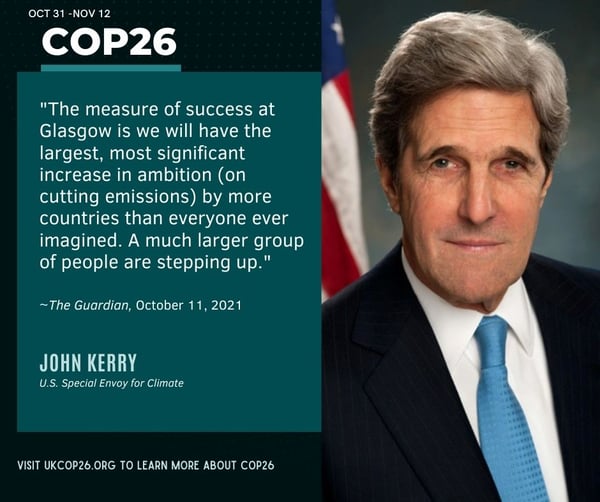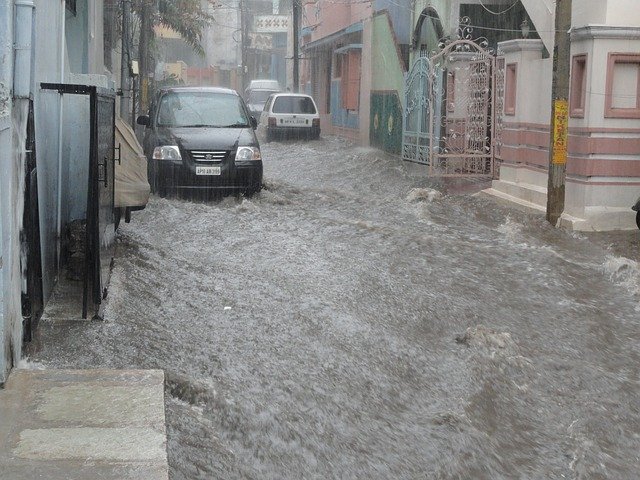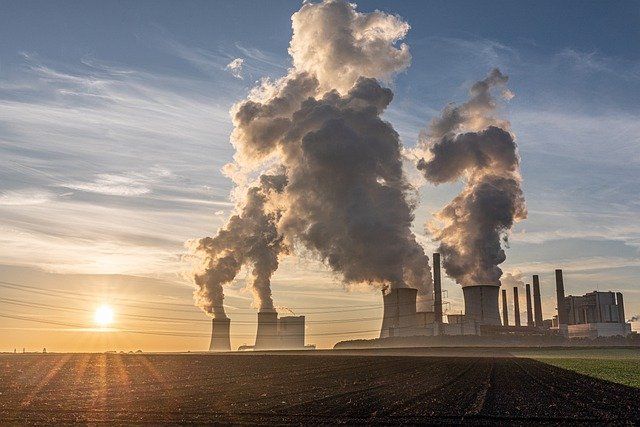The Importance of COP26
The nations of the world have come together in Glasgow for the 26th Conference of Parties (COP26). The event will take place from Oct. 31 through Nov 12, and it is being billed, by some, as the last best chance to save the planet. After the signing of the Paris Agreement in December of 2015, participating countries agreed to hold themselves accountable for meeting various environmental deadlines by the middle of the century. Countries are supposed to update and strengthen their emissions target or Nationally Determined Contributions (NDC) every five years. Because of the pandemic in 2020, the meeting was delayed by a year. COP26 is the first official deadline where the leaders of the world will come together and report their successes and shortcomings.
Although one meeting will not be able to solve every environmental ill, there are certainly high hopes going into COP26. The clock is, indeed, ticking to obtain the goal of bringing global warming down 1.5 degrees Celsius to match pre-industrial levels. The main objective for participating countries is to institute policies for the desired globalized outcomes. John Kerry, U.S. Special Envoy for Climate, referred to COP26, "It is the starting line for the rest of the decade."

The Stakes
According to the National Oceanic and Atmospheric Association's (NOAA) 2020 Annual Climate Report, the combined land and ocean temperature has increased at an average rate of 0.13 degrees Fahrenheit (0.08°C) per decade since 1880. However, the earth's rate of increase has more than doubled since 1981 (0.18°C / 0.32°F). Among other impacts, continued rising temperatures escalate the risks of extreme weather and climate events happening more often. This could include extreme temperatures, precipitation, drought, or flooding.

The Numbers
The 2020 United Nations Environment Program (UNEP) Emission Gap Report provides stunning data of the world's emissions status as well as prognostication concerning where the world will be if preventive measures are not taken. For example, the 2020 report stated, despite a brief dip in CO2 emissions caused by the COVID-19 pandemic, the world is still heading toward an excess of 3 degrees Celsius this century - far beyond the Paris Agreement goals of limiting global warming to well below 2 degrees Celsius.
The Emissions Gap Report 2021 was just released a few days before COP26. The report now shows that new national climate pledges combined with other mitigation measures put the world on track for a global temperature rise of 2.7 degrees Celsius by the end of the century. The number is still higher than it should be, but the projected decrease with the added commitments is notable. However, the report additionally states, "As a group, G20 members are not on track to achieve either their original or new 2030 pledges. Ten G20 members are on track to achieve their previous NDCs, while seven are off track."
Speaking about the detrimental effects of global warming, UNEP Director Inger Andersen said, "Scientists have issued this message for more than three decades, but the world has not listened." It is evident, considering the top three emitters are responsible for roughly 45 percent of the total greenhouse gas emissions. China leads the way as the highest emitter, followed by the U.S. and India.

The UNEP report does offer some good news. It reports that a growing number of countries are committing to net-zero emissions goals by mid-century. However, the report stipulates, "To remain feasible and credible, it is imperative that these commitments are urgently translated into strong near-term policies and action, and are reflected in the"¯NDCs."
COP26 Expectations
- Countries will need to set new climate goals.
- Participants should affect legally binding policies for global emissions.
- Make an exit strategy for the use of coal as an energy source with plans of decarbonizing by 2050.
- Address the inequalities of impacts of the climate crisis in developing countries as it relates to losses, damages and the financial solutions to support.
Rebuilding After the Pandemic
While COP26 is dealing with issues of the environment, it is important to note that finances motivate much of the environmental decision-making policies. Cambridge University held a forum at their Alumni Festival called "Climate Change and the Economy: What COP26 needs to know." Matthew Argarwala, an economist from Bennet Institute's Project on Wealth Economy, spoke at the event saying, "We have a chance at the moment to invest in a different kind of economic future… we will receive the future that we build. We will get the future we invest in now." Argawala continued, "There's a chance to reorient the economy, and there's a public demand for doing so following the COVID pandemic. We need to make this one a green recovery."
The World is Watching
There is no doubt, the outcomes of COP26 will be felt for decades to come. Expectations are high as the effects of global emissions threaten to endanger habitats, weather patterns, and livability. Nevertheless, the answers are not all dependent on the heads of state, big business or our local legislators. As much as we watch to see what outcomes will take place, it is imperative that we participate by doing our part to reduce our environmental footprint as well. That is how we can all make a difference.
